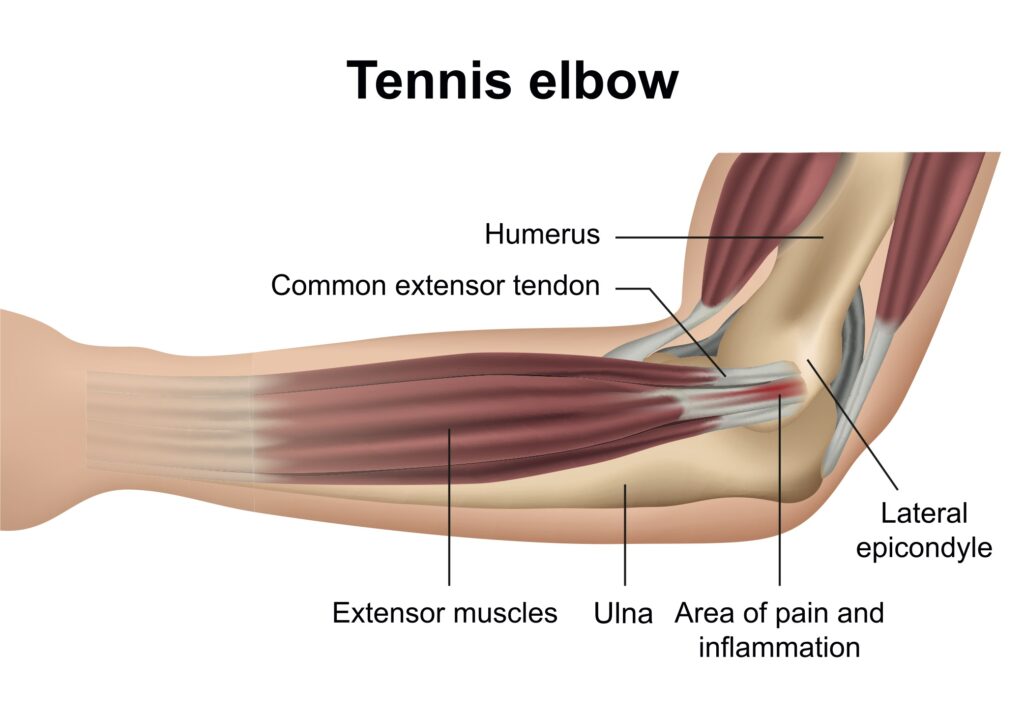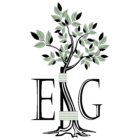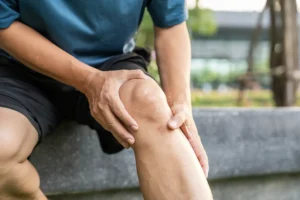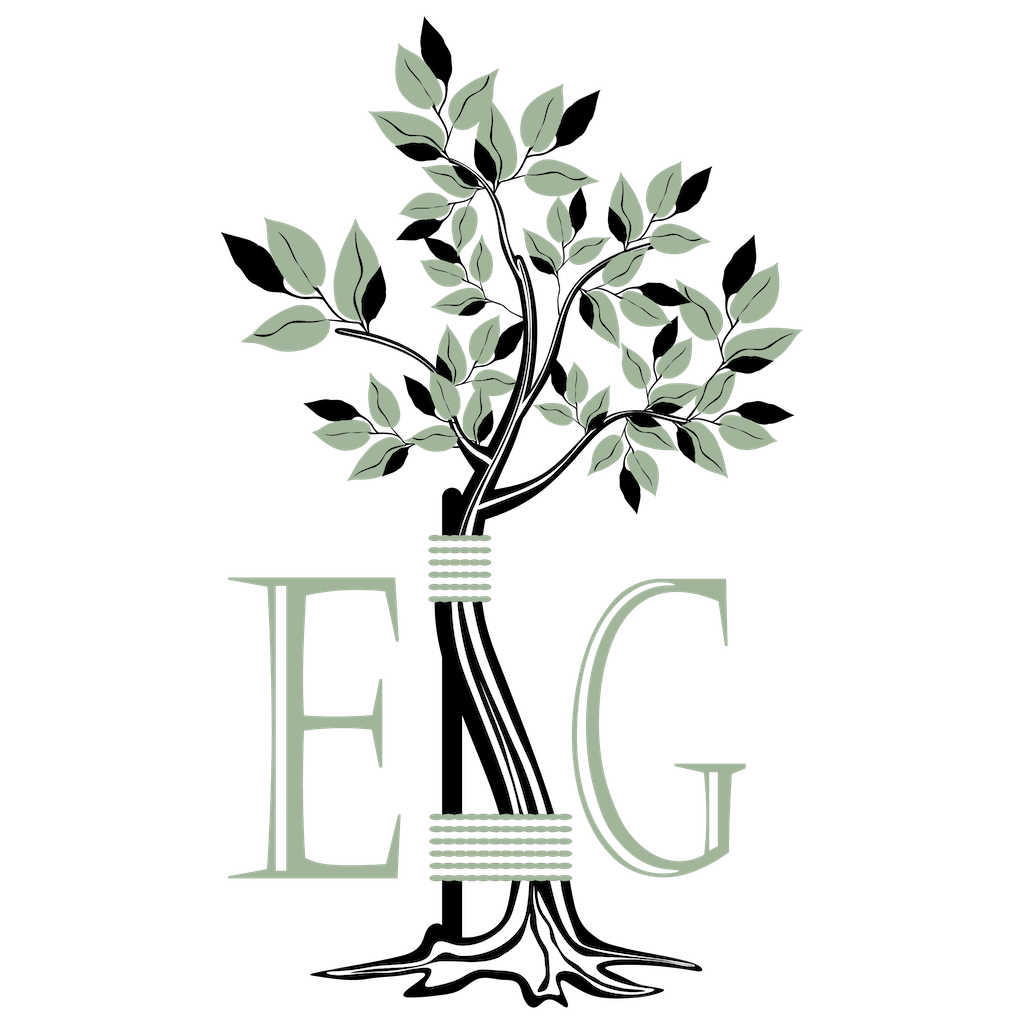If you are experiencing pain and tenderness on the outer side of your elbow, you may be suffering from tennis elbow, a condition that is caused by repetitive use of the arm. Despite its name, athletes are not the only people who develop tennis elbow. In this blog post, I will discuss the symptoms, causes, and treatment options, as well as provide some prevention tips to help you avoid this condition altogether.
What is tennis elbow and what are the symptoms?
Tennis elbow, or lateral epicondylitis, is a painful condition that results from overuse of the forearm muscles. This repetitive use and strain can lead to inflammation or damage to the tendons that attach the muscles to the bony bump on the outside of the elbow.
Tennis elbow symptoms include weakness in the forearm as well as pain spreading down to the wrist. You may also experience a loss of grip strength, finding it difficult to turn a doorknob or even hold a coffee cup. You may find that the symptoms of tennis elbow are often worse when you attempt to grip something or lift your arm.
As the name suggests, playing tennis, especially with repeated use of the backhand stroke or poor technique, is one possible cause of tennis elbow. However, it certainly is not a condition that is limited to athletes. People whose job that also include repetitive motions with their arms, such as carpenters, painters, butchers, and musicians have a greater chance that they may suffer from this condition. While tennis elbow affects people of all ages, it is often most common in adults between the ages of 30 and 50.
Anatomy of the elbow
To understand tennis elbow better, it helps to have a basic understanding of the anatomy of the elbow. The elbow is a joint that connects three bones: the humerus in your upper arm, and the ulna and radius in your forearm. These bones are connected by muscles, tendons, and ligaments. The tendons that attach the forearm muscles to the bony bump (known as the lateral epicondyle) on the outside or lateral side of the elbow are called the common extensor tendons. These are the tendons that becomes inflamed in tennis elbow.

What causes tennis elbow?
As I mentioned above, tennis elbow is caused by overuse or repetitive strain on the forearm muscles. This can happen from activities that require you to grip or twist your forearm, such as playing tennis, using a screwdriver, or even painting. In addition to repetitive motions, other risk factors for developing tennis elbow include:
- Poor technique when performing activities that use the arm
- Using equipment that is ill-fitting or too heavy
- Having a job that puts strain on the arm, such as carpentry or painting
- Having a previous injury to the arm
How is it treated?
Tennis elbow often gets better on its own when treated with a combination of rest, ice, and over-the-counter pain medication. You may also find relief from wearing a forearm strap or splint. If these conservative measures do not provide relief or if symptoms are disabling, it may be time to see an orthopedic surgeon for further treatment. Physical therapy, corticosteroid injections, and surgery are other possible treatments that your surgeon may suggest for tennis elbow.
10 frequently asked questions about tennis elbow
What causes tennis elbow?
Tennis elbow is a painful condition caused by repetitive arm movements that can cause your forearm muscles to get fatigued. This overuse injury, occurs when tendons become overloaded by the repetitive motions, leading to inflammation, degeneration and potential tearing. Despite its name, tennis players are not the only ones to suffer from this condition. Anyone who uses repetitive motions involving their forearms or wrists, such as a painter, carpenter, dentist or musician can get tennis elbow.
Where is tennis elbow pain?
Tennis elbow pain occurs primarily where the tendons of your forearm muscles attach to a bony bump on the outside of your elbow and can spread into your forearm and wrist. Tendons connect your muscles to your bones and with repeated arm movements, such as swinging a tennis racket or hammer, the tendons at the elbow end of the extensor carpi radialis brevis (ECRB) muscle may end up with small tears. These tears may put stress on the rest of your arm, making it increasingly painful to lift and grip objects.
What are the symptoms of tennis elbow?
The pain associated with tennis elbow occurs primarily where the tendons of your forearm muscles attach to a bony bump on the outside of your elbow and can spread into your forearm and wrist. Symptoms tend to come on slowly and may get worse over weeks and months. Burning or pain on your outer elbow, pain with bending or twisting your arm, weakened grip, stiffness, and elbow swelling are all possible symptoms associated with tennis elbow.
How do you treat tennis elbow at home?
Tennis elbow can often get better on its own with little, if any, treatment. First steps to treating tennis elbow is to limit or avoid the activities that aggravate your elbow pain and rest until the pain has been eliminated. Other treatment options include ice, over-the-counter pain medications such as ibuprofen, wearing a support brace, and physical therapy exercises. If these conservative treatments aren’t relieving your pain, it may be time to see an orthopedic surgeon for more options.
What kind of doctor treats tennis elbow?
It is important to seek diagnosis and treatment advice from an orthopedic surgeon when dealing with tennis elbow symptoms.
How is tennis elbow diagnosed?
During your exam, your doctor may apply pressure to the affected area or ask you to move your elbow, wrist and fingers in various ways, checking for joint pain, swelling and stiffness. They will ask about your symptoms, activities and medical history. In most cases, this is enough to make a diagnosis, but your doctor may suggest an x-ray or other imaging tests be done.
Does tennis elbow require surgery?
Approximately 95% of people who have tennis elbow get better without surgery. However, if your symptoms haven’t improved after six to 12 months of non-operative treatment, you may be a candidate for surgery to remove damaged tissue. Surgery typically involves removing the injured tendon and muscle and replacing the damaged tissue with healthy tendon and muscle from a different part of your body. These types of procedures can be performed through a large incision or through several small incisions. Talk to your doctor if your pain has not been manged through conservative measures.
How long does tennis elbow last?
It may take six to 18 months for symptoms to go away completely, and only a small percentage of people will need surgery. Between 80% to 90% of people who get tennis elbow surgery see their symptoms improve within one year.
What exercises help tennis elbow?
Building strength with light weights is extremely important to help prevent and heal from tennis elbow. Warm up and stretch before any activity, especially one that involves making the same motions over and over. Make sure that you are using proper technique for your activities and avoiding repetitive wrist motions as much as possible.
How does a tennis elbow brace work?
Wearing a supportive brace on your forearm may be a helpful in taking some pain and pressure off the tendons in your elbow. It is important to know that a brace alone will not eliminate the pain, but it can help in relieving some of it. Talk with your doctor or physical therapist about whether you should use one and the right kind of forearm brace for you.
Who is at risk for developing tennis elbow?
Tennis elbow affects roughly 3% of people, mostly between the ages of 30 and 50. Any repetitive, forceful motion that pulls on the tendon and muscle around your elbow can cause tennis elbow. Such as in tennis, the motion of hitting backhand puts some stress on your forearm muscles when you hit the ball.
Technique is extremely important. If you do not have proper technique or if you grip the racquet too tightly, more stress is placed on the tendons that connect your forearm muscles to your elbow. This can cause the tendons to get small tears.
Tennis elbow can affect people whose jobs or activities involve repetitive arm motion, such as painters, carpenters, musicians, dentists, plumbers, and chefs. In some cases, an injury suffered from a direct blow to your elbow can also make the tendons swell and cause pain.
Prevention tips
There are several things you can do to prevent tennis elbow from developing in the first place. If your job puts repetitive strain on your arm, be sure to take regular breaks to stretch and rest your muscles, avoiding activities that may aggravate the pain in your elbow.
When participating in activities that require repetitive arm motions, be sure to concentrate on using proper technique. When it comes to lifting weights, especially if you are just starting out, be sure to use lighter equipment and gradually increase weight until your muscles have built up strength to avoid strain. And finally, if you do start to experience symptoms of tennis elbow, be sure to see an orthopedic surgeon right away for treatment to prevent the condition from becoming worse.
If you are suffering from tennis elbow pain, I would be happy to meet with you and help you explore your treatment options. Please give us a call or complete the form below to set up a consultation with me.
"*" indicates required fields





